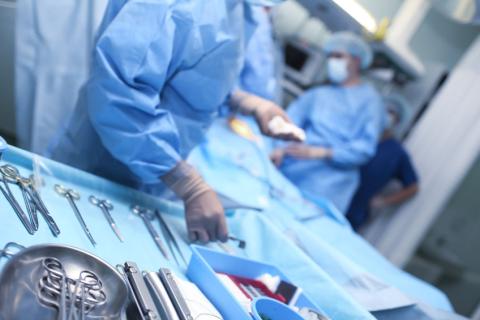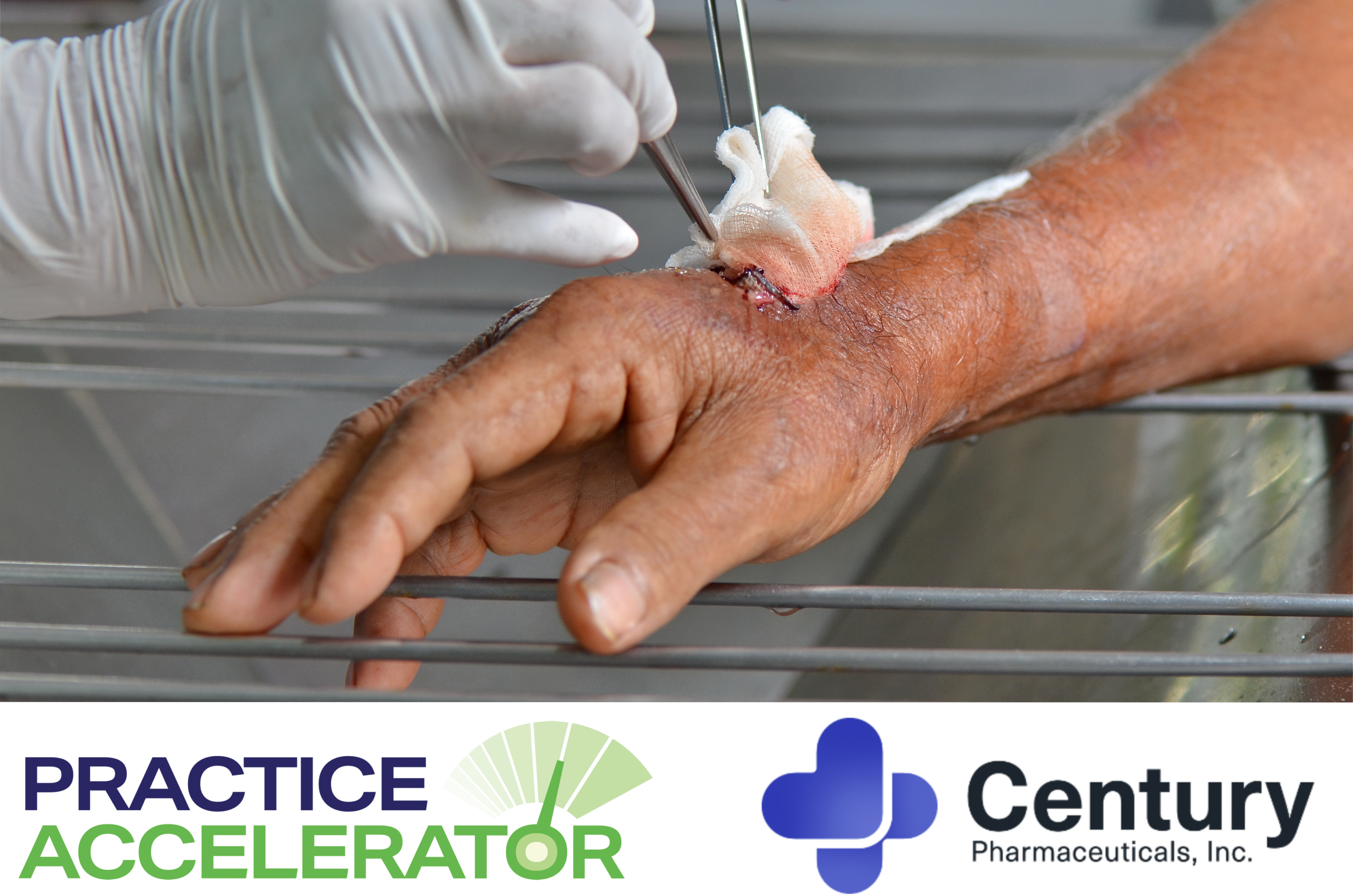Pressure Injuries and Flap Surgery
October 31, 2020
Patients who develop stage 3 and 4 pressure injuries with prolonged wound chronicity and complexity may require surgical intervention. One surgical method used to encourage healing in pressure injuries is flap surgery, which involves taking a section of skin with an intact blood supply and placing it over the injured area. Flaps play a major role in the healing of wounds with exposed structure. Flap surgery can help prevent hospitalization and decrease morbidity. Flap surgery is used to prevent and resolve complications, including surgical site infections and other infections, dehiscence, recurrence, flap necrosis, nutrient deficiencies, and prevention of future malignancy (Marjolin ulcer) and seroma or hematoma.
Types of Surgical Flaps
Various types of flap surgery techniques are used, but myocutaneous flaps can best help heal osteomyelitis and limit damage caused by shearing, friction, and pressure because they provide vascularized muscle, subcutaneous fat, and skin. Free flaps are known to be the most complex and are muscle-type flaps in which the vein and artery are disconnected at the donor site and are reconnected to vessels at recipient site.1 Patients with spinal cord injuries are among the most susceptible to pressure injuries. It is estimated that approximately 30% of patients with spinal cord injuries have pressure injuries 20 years after the original spinal cord injury.2
Risk Stratification for Surgical Flap Procedures
Risks and benefits of flap surgery for pressure injuries must be evenly balanced to prevent complications.3 Ischial pressure injuries have been reported to be a higher risk factor for recurrence and dehiscence because of their location, where ischial tuberosities are used in sitting.4 Dehiscence of the flap surgery site is the most common surgical complication, with recurrence rates reported as high as 80% in some series.3 Nutrition plays a major role in risk of pressure injury and in recovery from pressure injury flap surgery. Low pre-albumin and albumin levels are associated with complications such as wound dehiscence.5 Nutrition should be assessed and corrected as necessary before flap surgery.
Wound Care After Flap Surgery
The period after flap surgery is a critical time to achieve and optimize best outcomes. If the flap surgery was performed on the ischial or sacral area, the patient must follow a strict regimen that starts with very limited sitting after two to six weeks post-operatively. It is imperative that “progressive sitting” be implemented during the post-operative period to reduce risk of dehiscence and ischemia in the flap. The time starts for only 10 minutes per day and increases over the course of a few weeks. During this time, it is vital to check the incision line for redness and/or ischemia.
How much do you know about pressure injury prevention? Take our 10-question quiz to find out! Click here.
Negative pressure wound therapy (NPWT) used in surgical incisions has been found to be a useful wound care modality. The mechanisms of action of NPWT in surgical incision sites include protection of the incision site, removal of fluids and infectious materials from the site, and support in bringing incision edges together.6 NPWT is helpful in reducing surgical site infections and wound dehiscence in patients with anticipated complications.
These anticipated complications include persistent dead space and wound exudate at the recipient site despite an appropriate flap cover. Therefore, assisting in protecting the incision site from external infectious sources is vital in preventing infection.7,8 Application of NPWT to the flap surgical site incision line is paramount. Wound care professionals need practical knowledge of NPWT drainage tube positioning to avoid bony prominences, skin folds, and creases, to prevent medical device–related pressure injury caused by the drainage tubing. Always bridge posterior wounds to the lateral or anterior surface to minimize further skin injuries caused by pressure from drainage tubing.9
Special Consideration for Patients With Spinal Cord Injury
Patients with spinal cord injuries are among the most susceptible to pressure injuries. It is estimated that approximately 30% of patients with spinal cord injuries have pressure injuries 20 years after the initial spinal cord injury.2 In the post-operative period after pressure injury flap surgery, patients with spinal cord injuries can have intense muscle spasms caused by associated spasticity and leading to early loosening of sutures, prolonged healing time, flap failure, and dehiscence. More than 80% of patients with spinal cord injuries present with spasticity, which is triggered by various stimuli, including heat, cold, and bladder distention.8
Conclusion
It is imperative to carefully plan, evaluate, and appropriately stratify each patient’s case by risk to optimize better outcomes in flap surgery. Encompassing a multidisciplinary team approach is essential in improving outcomes. The patient and nursing staff should have practical knowledge of post-operative care to avoid shear and pressure.

References
1. Black J, Black S. Ten top tips: improving outcomes from flap reconstruction. Wounds Int. 2017;8(3)/ https://www.woundsinternational.com/resources/details/ten-top-tips-impr…. Accessed October 22, 2020.
2. McKinley WO, Jackson AB, Cardenas DD, et al. Long-term medical complications after traumatic spinal cord injury: a regional model systems analysis. Arch Phys Med Rehabil. 1999;80:1402-1410.
3. Bamba R, Madden JJ, Hoffman AN, et al. Flap reconstruction for pressure ulcers: an outcomes analysis. Plast Reconstr Surg Glob Open. 2017;5(1):e1187. doi:10.1097/GOX.0000000000001187
4. Lindan O, Greenway RM, Piazza JM. Pressure distribution on the surface of the human body. I. Evaluation in lying and sitting positions using a “bed of springs and nails.” Arch Phys Med Rehabil. 1965;46:378-385.
5. Guenter P, Malyszek R, Bliss DZ, et al. Survey of nutritional status in newly hospitalized patients with stage III or stage IV pressure ulcers. Adv Skin Wound Care. 2000;13(4 Pt 1):164-168.
6. Karlakki S, Brem M, Giannini S, et al. Negative pressure wound therapy for management of the surgical incision in orthopaedic surgery: a review of evidence and mechanisms for an emerging indication. Bone Joint Res. 2013;2(12):276-284.
7. Naalla R, Bhushan S, Abedin MU, Bichpuriya AD, Singhal M. Closed incisional negative pressure wound therapy at flap suture line: an innovative approach for improving outcomes in suboptimal wound conditions. Indian J Plast Surg. 2020;53(1):90-96. doi:10.1055/s-0040-1709528.
8. Negosanti L, Sanguinetti G, Gaiani L, et al. Spinal cord injury patients with spasticity and pressure sores: preliminary report on reconstruction with botulinum toxin treated muscle flaps. Integr Mol Med. 2019;6. doi: 10.15761/IMM.1000377. https://www.oatext.com/spinal-cord-injury-patients-with-spasticity-and-…. Accessed October 22, 2020.
9. Rock, R. Guidelines for safe negative pressure wound therapy. Wound Care Advisor. 2014;3(2). https://woundcareadvisor.com/guidelines-for-safe-negative-pressure-woun…. Accessed October 1, 2020.
The views and opinions expressed in this blog are solely those of the author, and do not represent the views of WoundSource, HMP Global, its affiliates, or subsidiary companies.












Follow WoundSource
Tweets by WoundSource